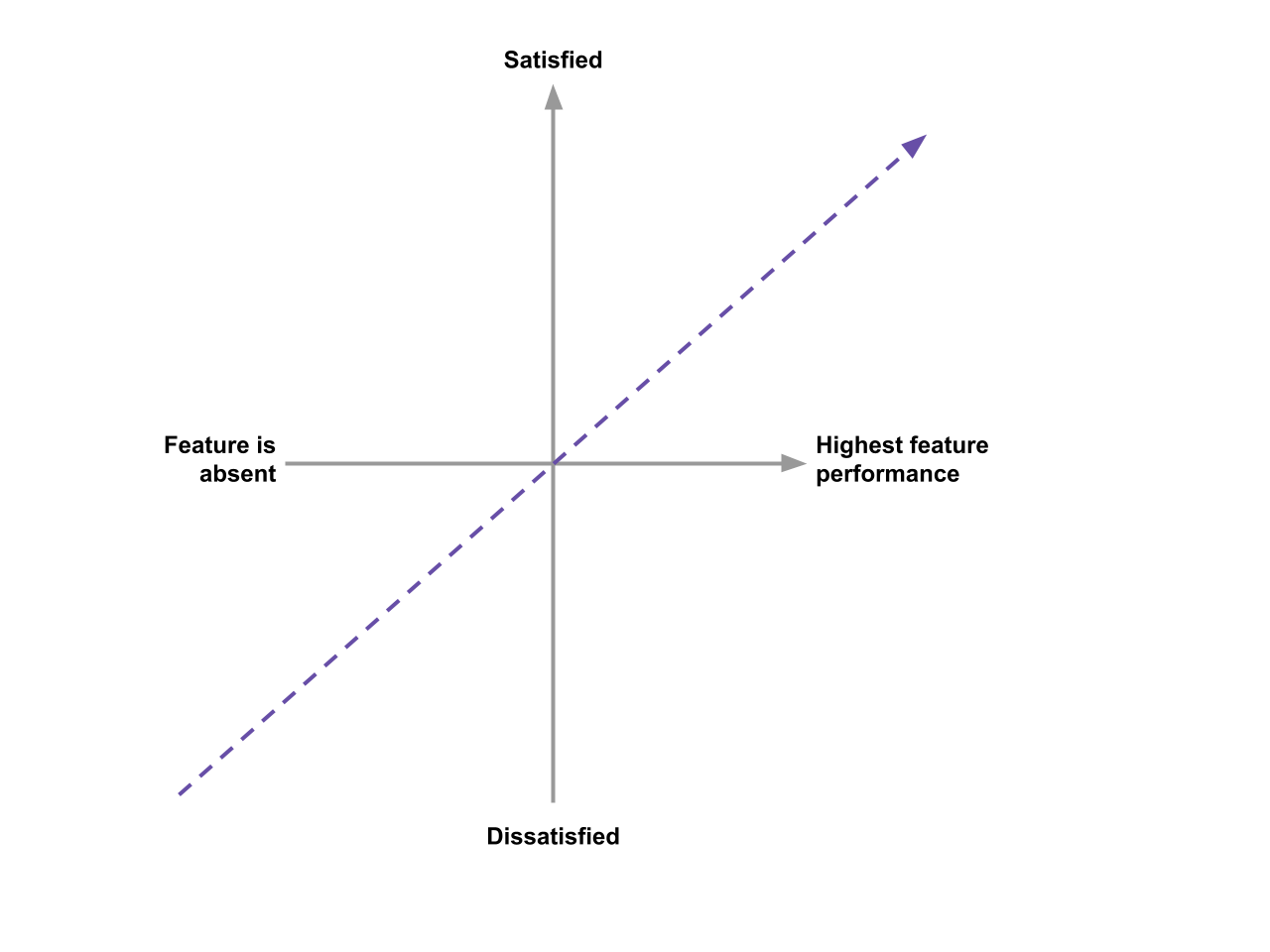Understanding the Kano model
I've rewritten the introductory chapter of the guide to the Kano model and suddenly something clicked. It's got something to do with dirty toilets.
Noriaki Kano developed his theory based on the observation that customer satisfaction is not only based on the objective performance of a feature. There is also a subjective element.
He looked at the American psychologist Frederick Herzberg for what that subjective element was. Herzberg’s theory — the Motivator-Hygiene theory — says that people in the workplace are motivated by two sets of factors:
One type are the hygiene factors. They will not motivate employees as such, but their absence is cause for lower motivation. An office with no clean toilets is cause for reduced motivation. The presence of clean toilets creates motivation, but only up until a certain level. Toilets can only be so clean. Whether the toilets are sparkling clean or clean enough has little to no influence on employee motivation.
The other type of factors are motivators. These increase motivation. Depending on your personality, factors that increase your motivation could be salary, relationships with colleagues or the type of work you’re doing. Unlike with clean toilets, increasingly interesting and challenging work keeps increasing motivation.
Dr. Kano transferred Herzberg’s theory to the realm of customer satisfaction with products. He theorized that:
There are features that do not increase customer satisfaction as such, but that will cause dissatisfaction if absent. A TV set with the guarantee it will not explode creates satisfaction, a TV set without that guarantee creates dissatisfaction. The safety guarantee has the same effect on customer satisfaction as as dirty toilets have on employee motivation. The presence of the feature creates a state of “not dissatisfied”.
There are features where satisfaction is directly related to their performance level. The power consumption of a TV set has a direct influence on customer satisfaction (the less power it consumes, the better).
Dr. Kano’s research shows that there five categories of relations between customer satisfaction and the feature. Features can therefore be categorized by how they influence customer satisfaction.




It’s important to understand this background of the Kano model. Certain nuances are easily lost when singularly focusing on the names of the different categories and not on the the different types of relations between feature and satisfaction they signify.1
So, for the Must-Be category for instance, never forget that there is a threshold level of performance that must be met. Think of the toilets. Suppose you’re opening a restaurant and you’re wondering about how clean the toilets should be. It’s not just a matter of having toilets, it’s a matter of having toilets that are clean enough before customers will be satisfied.
Conversely, don’t aspire to have the shiniest toilets of all restaurants in town. The effort you put in scrubbing them to make them sparkle will have little impact on customer satisfaction.
When prioritizing features based on their category, make sure you understand what their categories mean: it’s one of the different types of relations between a feature and customer satisfaction with it.
Understanding what that relation is for the feature you’re prioritizing will improve your decision making. You’ll know better where and how to improve performance (or not) in order to increase overall customer satisfaction with your product.
As you see, I’m still working on that definitive guide to the Kano model 😅
The long version of this introduction contains more examples (less toilets, more boxes) and a short overview of actions to undertake per feature category. Feel free to comment!
My guess is that we have become so accustomed to quadrants that we sometimes forget that the pictures are graphs. The graphs show the evolution of satisfaction in relation to the performance of the feature, and not the location of a feature in a quadrant.


